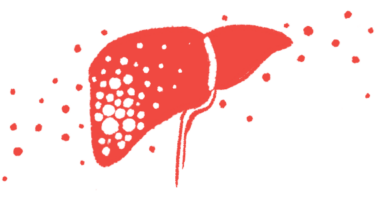2nd-generation gene therapy led to better outcomes in early study
Investigational new drug application for CAN203 expected in late 2024

A second-generation gene therapy, administered directly into the brain, led to faster and more pronounced improvements on motor function in a mouse model of spinal muscular atrophy (SMA) compared with a benchmark vector similar to the approved gene therapy Zolgensma (onasemnogene abeparvovec-xioi).
That’s according to new data announced by CANbridge Pharmaceuticals, which acquired rights to develop the therapy earlier this year.
CANbridge is now moving into preclinical studies that would support an investigational new drug (IND) application — a formal request to U.S. authorities to start clinical testing of the therapy, dubbed CAN203. The IND application is expected to be filed in late 2024.
“We are pleased to advance CAN203 from these proof-of-concept nonclinical studies to IND-enabling studies,” Jason West, PhD, vice president, head of gene therapy research at CANbridge, said in a company press release.
CAN203 designed to more safely deliver healthy SMN1 gene copy to motor cells
SMA is caused by mutations in the gene SMN1, which provides instructions for making the SMN protein. Lack of this protein results in the progressive death and dysfunction of motor neurons (the nerve cells that control movement).
Both CAN203 and Zolgensma (sold by Novartis) are designed to deliver a healthy copy of the SMN1 gene to motor cells.
The approved formulation of Zolgensma, authorized in the U.S. for SMA patients 2 years and younger, is administered by intravenous (into-the-bloodstream) infusion. But the treatment uses a high dose that can increase the risk of certain adverse events, including the potential for liver damage or other blood-related complications.
CAN203 was designed to allow better delivery of the gene to motor neurons, minimizing side effects in the rest of the body. It carries certain modifications to the delivered gene that ensure only cells where the SMN1 gene would normally be active in the body will produce the SMN protein.
A prior mouse study compared CAN203 against another gene therapy designed similarly to Zolgensma, both given into the bloodstream. Results showed better survival and motor outcomes with CAN203, in addition to less toxicity.
In the new studies, researchers compared the two therapies when administered via intracerebroventricular (ICV) injection — an injection directly into fluid-filled cavities in the brain. Theoretically, this route could allow higher doses of gene therapy to be given, which could make treatment feasible for older, heavier patients who need much higher doses.
“Intravenous delivery of gene therapy has been successfully used to treat infants with SMA type 1, but it will be challenging to treat older patients who need much more viral vector or have pre-existing anti-AAV antibodies,” said Jun Xie, PhD, a professor at UMass Chan Medical School and co-author of the study.
We are pleased to advance CAN203 from these proof-of-concept nonclinical studies to IND [investigational new drug]-enabling studies.
Mice treated with CAN203 improved faster in measures of motor function
In the study, mice were given ICV injections of CAN203 or the benchmark therapy at one of two doses — a high dose of 33 trillion vector genomes per kg (vg/kg) and a low dose of 11 trillion vg/kg.
“These doses were one-tenth of those evaluated in [the] earlier intravenous (IV) study,” CANbridge wrote in the release.
Results showed that all mice given the high dose of either therapy survived to the end of the 90-day study. But among mice given a lower dose, survival outcomes were better with CAN203 than the benchmark.
Regardless of the dose given, mice treated with CAN203 improved faster in measures of motor function, namely the righting reflex, which involves complex muscular movements in response to a stimulus, and the grid test, which measures muscle strength and coordination.
At 90 days after treatment, mice given the higher dose of CAN203 also had significantly better performance on the rotarod test (a measure of balance) compared to those given the benchmark therapy.
Results also showed that mice given CAN203 had higher SMN protein levels in their nervous system tissue than those given the control therapy, but lower levels in other bodily tissues (caused by off-target gene therapy delivery).
CAN203 potentially ‘safer and more efficacious gene therapy’
Overall, the patterns of SMN expression seen with CAN203 were more similar to what is seen in people without SMA, according to CANbridge.
Both CAN203 and the benchmark therapy use a modified virus, called AAV, to deliver their genetic payload to cells. Studies with other AAV-based gene therapies have shown toxicity to part of the nervous system called the dorsal root ganglia.
The researchers noted that this type of nervous system damage was not seen in mice given CAN203, even when a very high dose of 110 trillion vg/kg was administered.
“ICV delivery of CAN203 in the animal model results in a more targeted SMN expression profile using a low vector dose, which could lead to a safer and more efficacious gene therapy, with the potential to be used across all ages of patients with SMA when delivered directly” to the central nervous system, West said.









